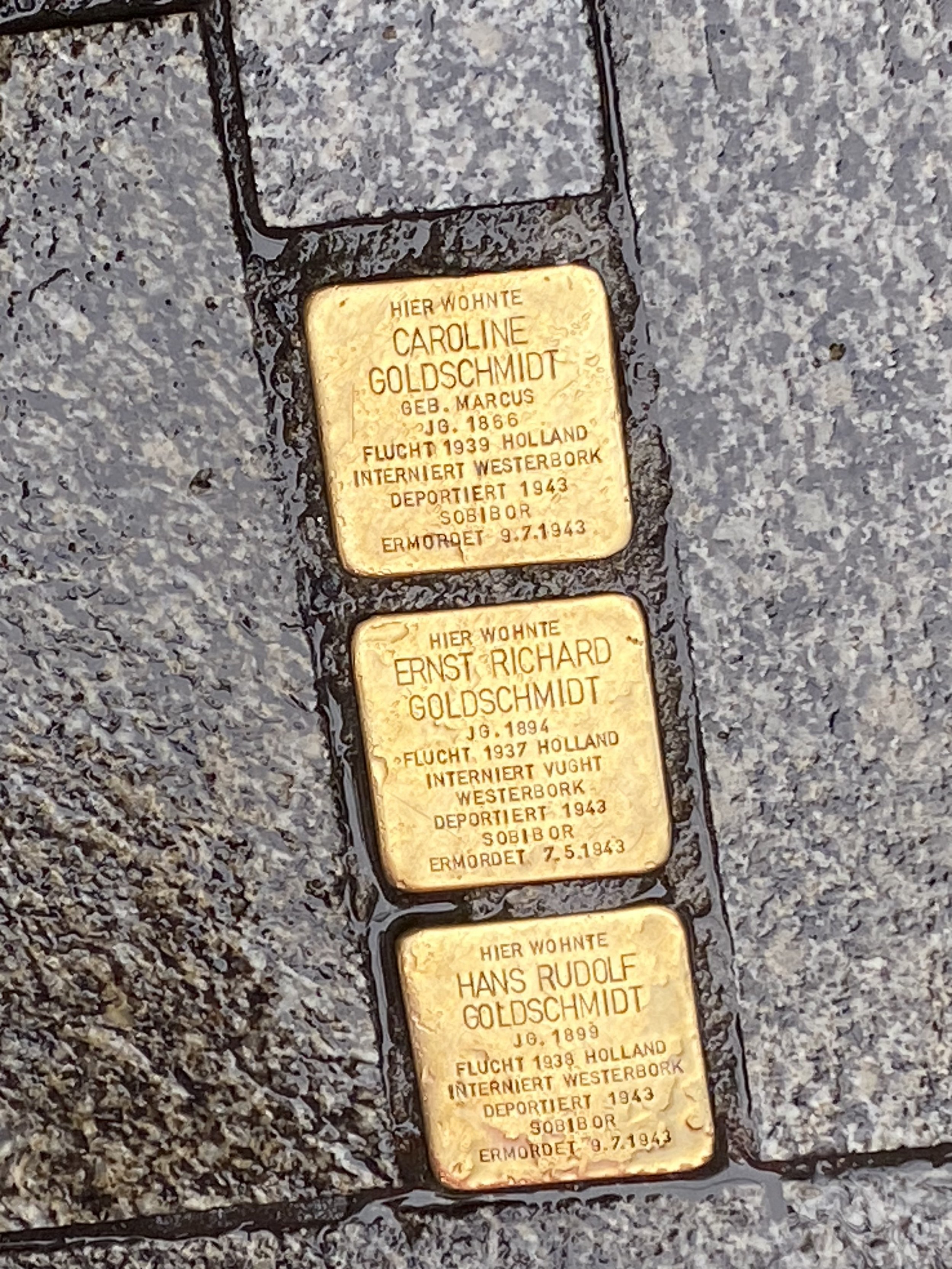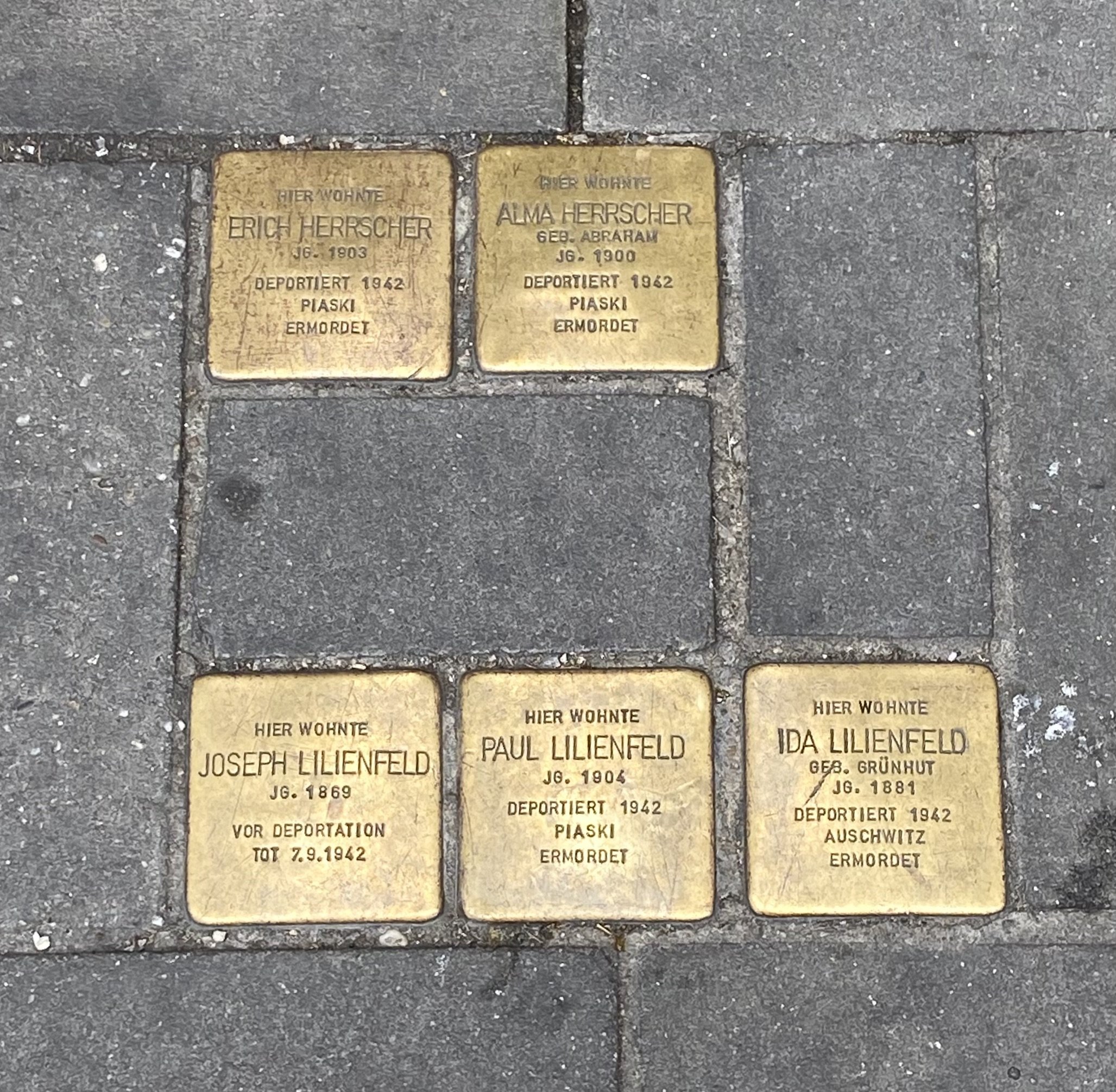Stolpersteins
One of the sobering experiences during our recent European river cruise was the memorials in Germany to the Holocaust. We were told the references and memorials to the Holocaust are most often driven by the thinking: “this must never happen again”. We saw several memorials to those who were murdered at the hands of the Nazis. We toured one of the caves in Neuremberg where the Nazis had stored the stolen art from all over Europe. We saw balconies where Hitler had given speeches and riversides on the Danude where hundreds of people were lined up and shot—leaving their shoes, the only thing the Nazis saw of value.
But most wrenching were the Stolpersteins, or stumbling stones. ‘Stumbling’ not so much that you trip over them, but that you must kneel down to read the inscription. They are most often placed at the doorsteps of where the person lived before they were taken from their homes and sent to a camp. Most were Jews but not all. Gypsies, blacks, mentally handicapped, gays, intellectuals and others—basically anyone the Nazis deemed unfit or a threat to the Third Reich were eliminated.
Kneeling was appropriate.
As I saw these four inch square, shiny brass memorials in the cobble stones, it struck me that for one reason or another, I would have seen the likes of a camp. Gunter Demnig started the project in 1992. Now there are well over 100,000 Stolpersteins in many cities and villages across Europe.
All photos in the article are my own (except the first photo on the blog content list, Francisco Peralta Torrejon was photographer )
Our German friends are right. We dare not forget, particularly in the political climate of our day.



